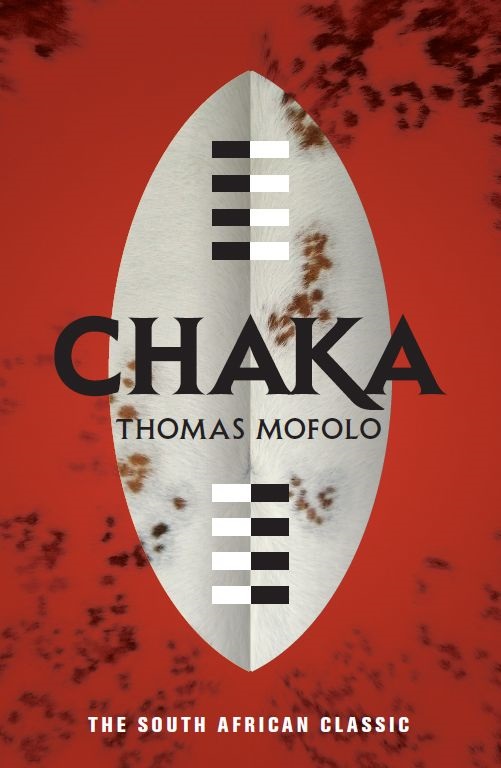BOOK REVIEW: Chaka
by Karin Schimke,
2016-02-26 06:07:15.0
THERE are two histories at play in the recent reprinting of Thomas Mofolo’s Chaka, and both are equally fascinating.
To read only the "history" (this is fictionalised biography) of the famously ambitious Zulu King Shaka is to have only half of the experience this book offers. The other history here is that of the manuscript itself and it is in reading this part — so lucidly explicated by the award-winning translator Daniel Kunene in the introduction — that the work truly blossoms.
To review the manuscript with a modern eye requires one to set aside modern expectations of the novel. The story’s texture and delivery is strongly influenced by the narrator’s avuncular voice. It feels as though one is listening to, rather than reading, a story.
This has an odd effect. On the one hand, it provides a warm and close embrace — it really feels as though one is being told a story by an uncle or a grandfather. The narrative conveys itself tellingly, rather than "showingly", and there are what feels like fussily detailed digressions, but which in time reveal themselves to be fundamental to understanding the intricacies of the plot.
The effect is oddly soporific. I had to read the book two pages at a time, or sitting bolt upright.
Which is not to say the book is boring. The Shaka story is fascinating in and of itself, but Mofolo has transformed his Chaka into a character of compelling authenticity. He creates a believable childhood for the king whose later megalomaniacal actions give rise to the Mfecane, a period of terror, chaos and forced migration across Southern Africa in the early 1800s.
The young Chaka — who is relentlessly bullied — becomes an adult who loses his humaneness in increments and then, altogether, in one catastrophically dehumanising act. The embedded reminder is that the bullied often become the bullies; that those who have been terrified will likely terrorise.
Chaka’s transformation is attributed in Mofolo’s fiction to a diabolical pact with Isanusi, the Diviner, who helps Chaka when he is, in all senses of the word, in the wilderness. Kunene, in his introduction, explains that Isanusi never existed and that he is "the result of Mofolo’s transformation of Chaka’s ambition into a man".
As a tale of how the tumour of power is its own mindless, self-perpetuating and dehumanising instrument, the story remains terrifyingly relevant.
The novel develops along a neat arc, with the turning point in Chaka’s life appearing roughly in the middle of the book. Two chapters of particular interest — if one is a close watcher of leadership style — are those in which two types of rule are explained. King Dingiswayo, who nurtures and trusts the young warrior Chaka, is a leader who encourages diversity and creativity. He rewards innovation, productivity, and beauty in arts, crafts and agriculture. His reign is benign and mostly peaceful.
Chaka inhabits Dingiswayo’s rule directly after the benevolent king dies and he begins reforms that turn the AmaZulu into a nation for which nothing but war has value. The chapter dealing with those reforms is quite riveting.
Chaka was first published in 1925 and was translated into English in 1931. It has since been translated into several other languages. Kunene’s translation dates from 1981. Mofolo was one of the first South African novelists to publish in an indigenous language (Sesotho).
Kunene’s translation is fluid and simple to follow, without sacrificing what feels like musicality of the source language. His introduction — which contains translation notes, history of the text and pointers about where fact and Mofolo’s fiction diverge — is a source of illumination to the modern reader and an act of art in itself.
In this Kwela edition of Chaka, there is also a foreword by Wamuwi Mbao that conveys some of the magic of both stories: the story of Shaka the mighty warrior king, and the story of Mofolo’s Chaka.

Picture: THINSKTOCK
THERE are two histories at play in the recent reprinting of Thomas Mofolo’s Chaka, and both are equally fascinating.
To read only the "history" (this is fictionalised biography) of the famously ambitious Zulu King Shaka is to have only half of the experience this book offers. The other history here is that of the manuscript itself and it is in reading this part — so lucidly explicated by the award-winning translator Daniel Kunene in the introduction — that the work truly blossoms.
To review the manuscript with a modern eye requires one to set aside modern expectations of the novel. The story’s texture and delivery is strongly influenced by the narrator’s avuncular voice. It feels as though one is listening to, rather than reading, a story.
This has an odd effect. On the one hand, it provides a warm and close embrace — it really feels as though one is being told a story by an uncle or a grandfather. The narrative conveys itself tellingly, rather than "showingly", and there are what feels like fussily detailed digressions, but which in time reveal themselves to be fundamental to understanding the intricacies of the plot.
The effect is oddly soporific. I had to read the book two pages at a time, or sitting bolt upright.
Which is not to say the book is boring. The Shaka story is fascinating in and of itself, but Mofolo has transformed his Chaka into a character of compelling authenticity. He creates a believable childhood for the king whose later megalomaniacal actions give rise to the Mfecane, a period of terror, chaos and forced migration across Southern Africa in the early 1800s.
The young Chaka — who is relentlessly bullied — becomes an adult who loses his humaneness in increments and then, altogether, in one catastrophically dehumanising act. The embedded reminder is that the bullied often become the bullies; that those who have been terrified will likely terrorise.
Chaka’s transformation is attributed in Mofolo’s fiction to a diabolical pact with Isanusi, the Diviner, who helps Chaka when he is, in all senses of the word, in the wilderness. Kunene, in his introduction, explains that Isanusi never existed and that he is "the result of Mofolo’s transformation of Chaka’s ambition into a man".
As a tale of how the tumour of power is its own mindless, self-perpetuating and dehumanising instrument, the story remains terrifyingly relevant.
The novel develops along a neat arc, with the turning point in Chaka’s life appearing roughly in the middle of the book. Two chapters of particular interest — if one is a close watcher of leadership style — are those in which two types of rule are explained. King Dingiswayo, who nurtures and trusts the young warrior Chaka, is a leader who encourages diversity and creativity. He rewards innovation, productivity, and beauty in arts, crafts and agriculture. His reign is benign and mostly peaceful.
Chaka inhabits Dingiswayo’s rule directly after the benevolent king dies and he begins reforms that turn the AmaZulu into a nation for which nothing but war has value. The chapter dealing with those reforms is quite riveting.
Chaka was first published in 1925 and was translated into English in 1931. It has since been translated into several other languages. Kunene’s translation dates from 1981. Mofolo was one of the first South African novelists to publish in an indigenous language (Sesotho).
Kunene’s translation is fluid and simple to follow, without sacrificing what feels like musicality of the source language. His introduction — which contains translation notes, history of the text and pointers about where fact and Mofolo’s fiction diverge — is a source of illumination to the modern reader and an act of art in itself.
In this Kwela edition of Chaka, there is also a foreword by Wamuwi Mbao that conveys some of the magic of both stories: the story of Shaka the mighty warrior king, and the story of Mofolo’s Chaka.





















Change: 1.19%
Change: 1.36%
Change: 2.19%
Change: 1.49%
Change: -0.77%
Data supplied by Profile Data
Change: -0.19%
Change: 0.69%
Change: 1.19%
Change: 0.00%
Change: 0.44%
Data supplied by Profile Data
Change: 0.62%
Change: 0.61%
Change: 0.23%
Change: 0.52%
Change: 0.12%
Data supplied by Profile Data
Change: -0.21%
Change: -1.22%
Change: -0.69%
Change: -0.51%
Change: 0.07%
Data supplied by Profile Data